
HTX Trading Fee Calculator
Enter your trading volume and select a trading type, then click Calculate to see your potential fees.
HTX Fee Tiers (2025)
| 30-Day Volume (BTC) | Maker Fee | Taker Fee |
|---|---|---|
| 0 - 10 | 0.20% | 0.20% |
| 10 - 100 | 0.15% | 0.20% |
| 100 - 500 | 0.10% | 0.20% |
| > 500 | 0.0126% | 0.20% |
When Argentine traders ask, “Can I use Huobi in Argentina?” they’re really looking for a clear picture of the exchange’s reach, costs, and security. Huobi, now operating under the brand HTX, is a global crypto exchange founded in 2013 by LeonLi and JunDu. Headquartered in the Seychelles, the platform serves more than 47million users across 160countries and offers over 700 digital assets. This review breaks down what Argentine users can expect - from availability and local payment options to fees, security measures, and the tools that set HTX apart.
TL;DR - Quick Takeaways
- HTX is globally available, but explicit confirmation for Argentina is missing; users must test login or contact support.
- Spot‑trading fees start at 0.20% (maker) and drop to 0.0126% for high‑volume traders.
- Supports 57 fiat currencies, but Argentine peso (ARS) integration is not confirmed.
- Security includes cold‑storage, Merkle‑tree proof of reserves, and a history of transparent breach handling.
- Features range from basic spot trading to staking, crypto loans, and copy‑trading.
Is HTX Accessible to Argentine Users?
The most common blocker for any exchange is regulatory fit. HTX lists several prohibited jurisdictions (China, the United States, Iran, etc.), but Argentina is not on that list. However, the lack of a clear “Argentina” mention on the official site means the exchange may still be reachable, albeit without localized payment methods or Spanish‑language support.
To verify access, Argentine traders should attempt a straightforward sign‑up:
- Visit htx.com and click “Register”.
- Enter an email address and create a password.
- Check the “KYC” page - if the platform asks for a national ID, it likely supports Argentina; otherwise you may see a “Service not available in your region” notice.
If registration succeeds, the next step is finding a fiat deposit method that accepts ARS. HTX currently offers bank transfers, VISA, and Mastercard for many currencies, but no explicit ARS gateway has been documented. Users often resort tothird‑party services (e.g., local crypto brokers) to convert ARS into a supported fiat like USD or EUR before depositing.
Fee Structure - How Much Does Trading Cost?
HTX follows a tiered maker‑taker model. The base maker fee is 0.20%, while takers pay 0.20% as well. Volume‑based discounts can bring maker fees down to 0.0126% for users moving over 500BTC per month. Here’s a snapshot of the first three tiers:
| 30‑Day Volume (BTC) | Maker Fee | Taker Fee |
|---|---|---|
| 0 - 10 | 0.20% | 0.20% |
| 10 - 100 | 0.15% | 0.20% |
| 100 - 500 | 0.10% | 0.20% |
| > 500 | 0.0126% | 0.20% |
Beyond spot fees, margin trading attracts a 0.02% daily financing charge, and futures fees start at 0.04% for makers. For Argentine users paying with local fiat via a third‑party service, additional conversion fees (usually 1-3%) should be factored into the total cost.
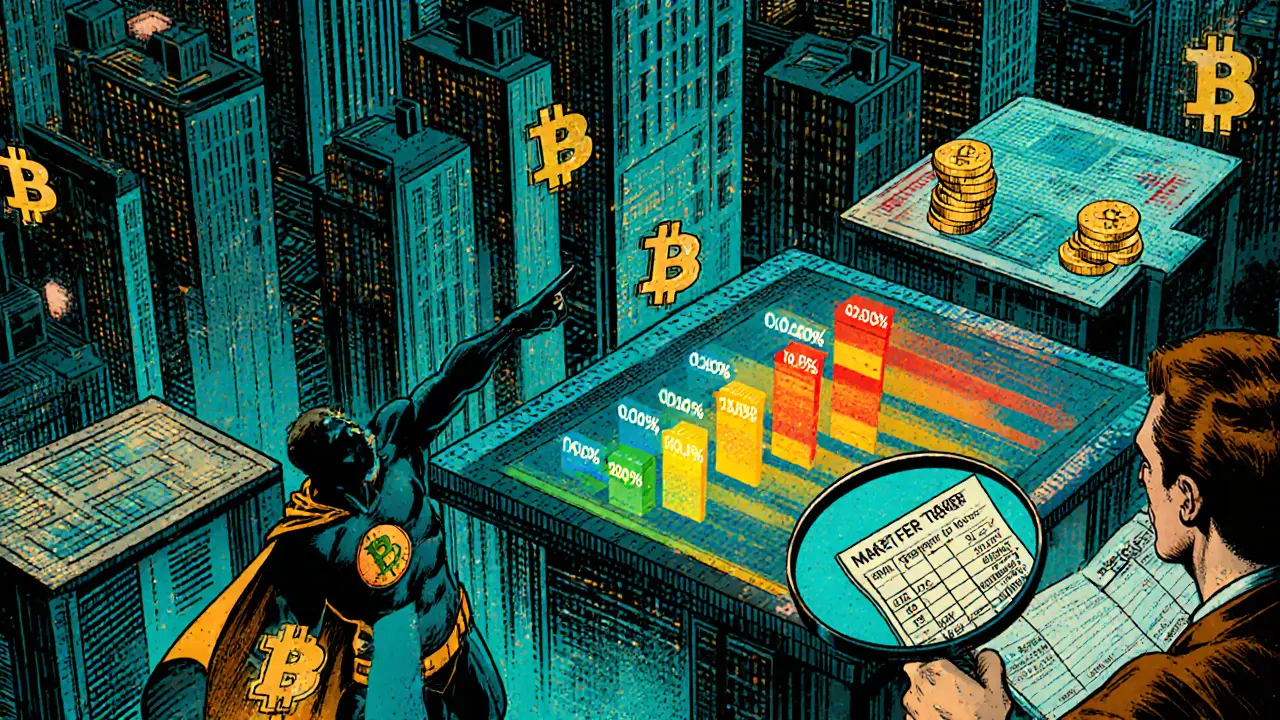
Core Features - What Can You Do on HTX?
HTX positions itself as a “people’s exchange” with a wide toolbox:
- Spot Trading: Over 1,000 pairs, including major coins (BTC, ETH) and hundreds of altcoins.
- Staking & Yield Products: Users can lock up assets for weekly or monthly returns, with APYs ranging from 3% to 15% depending on the token.
- Crypto Loans: Borrow against BTC, ETH, or USDT collateral at rates starting at 4% APR.
- Copy‑Trading: Follow seasoned traders and replicate their orders automatically.
- OTC Desk: Large‑volume users can negotiate block trades with dedicated support.
- Native Token (HT): Holding HT grants fee discounts, voting rights in the HTX DAO, and occasional airdrops.
All features are accessible via desktop and a mobile app (iOS&Android) that scores 4.5stars on both stores for usability.
Security - Is Your Money Safe?
Security is often the make‑or‑break factor for exchanges. HTX employs several industry‑standard safeguards:
- Cold Storage: Approximately 98% of user funds sit offline in geographically diversified vaults.
- Merkle‑Tree Proof of Reserves: The exchange publishes periodic cryptographic proofs that confirm total holdings without exposing individual balances.
- Two‑Factor Authentication (2FA): Google Authenticator or SMS codes are mandatory for withdrawals.
- IP Whitelisting & Withdrawal Limits: Users can lock withdrawals to trusted devices only.
HTX has faced two notable breaches (2021 and 2023). In each case, the team disclosed the incident within 48hours, reimbursed affected users, and tightened the affected subsystem. This transparent response has earned it a respectable reputation among large‑scale exchanges.
Pros and Cons for Argentine Traders
| Pros | Cons |
|---|---|
| Global reach and high liquidity (>$4B daily volume) | No officially listed ARS deposit method |
| Tiered fees can become very cheap for active traders | Customer support primarily in English; Spanish help center limited |
| Wide product suite - staking, loans, copy‑trading | Regulatory uncertainty - must verify compliance with Argentine AML rules |
| Strong security (cold storage, proof of reserves) | Mobile app occasionally lags during peak volume spikes |
How to Get Started (Step‑by‑Step)
- Register an Account: Provide email, set a strong password, and verify the email link.
- Complete KYC: Upload a scanned Argentine DNI, a selfie, and proof of address (utility bill). The process typically takes 15‑30minutes.
- Enable 2FA: Download Google Authenticator and scan the QR code in the security settings.
- Deposit Funds: If ARS is unavailable, purchase USDT on a local peer‑to‑peer platform, then transfer the USDT to your HTX wallet.
- Start Trading: Navigate to the “Spot” market, select a pair (e.g., BTC/USDT), and place a limit or market order.
- Explore Advanced Tools: Try staking HT for fee discounts or copy‑trade a top performer via the “Copy‑Trade” tab.
Remember to keep withdrawal addresses on a whitelist and never share your 2FA codes.
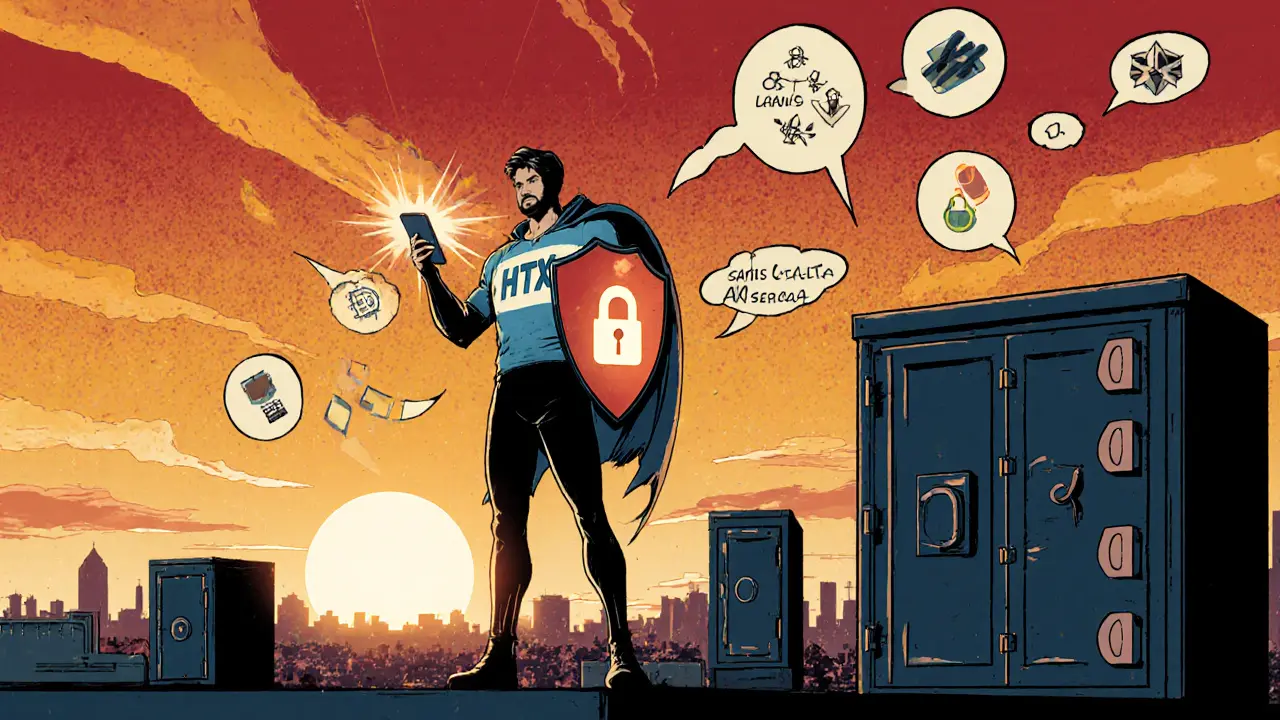
Frequently Asked Questions
Is HTX legal to use in Argentina?
HTX is not expressly prohibited by Argentine regulators, but the exchange does not list a local ARS payment method. Users should confirm that their deposits and withdrawals comply with Argentina’s AML/CTF rules before trading.
Can I trade with Argentine pesos (ARS) directly?
As of October2025, HTX does not advertise a native ARS gateway. Most Argentine traders convert pesos to a supported fiat (USD/EUR) via local brokers or use stablecoins like USDT/USDC for the deposit.
What are the main security features I should enable?
Activate two‑factor authentication, set up IP whitelisting for withdrawals, and keep the bulk of your holdings in cold storage or on the platform’s staking products that lock funds offline.
How does the fee discount with the HT token work?
Holding HT grants a 10%‑15% reduction on maker fees once you stake the token in the HTX DAO. The more HT you lock, the deeper the discount tier you reach.
Is customer support available in Spanish?
HTX provides English‑language support 24/7 via live chat and ticketing. Spanish assistance is limited to community forums and translated articles; direct Spanish chat is not guaranteed.
Overall, HTX offers a robust, low‑cost platform that rivals the world’s top exchanges. Argentine users can profit from its deep liquidity and feature set, but they must navigate the gap in local fiat onboarding and ensure compliance with national regulations. A careful test‑run with a modest amount of USDT is the safest way to gauge whether the exchange fits your trading style.

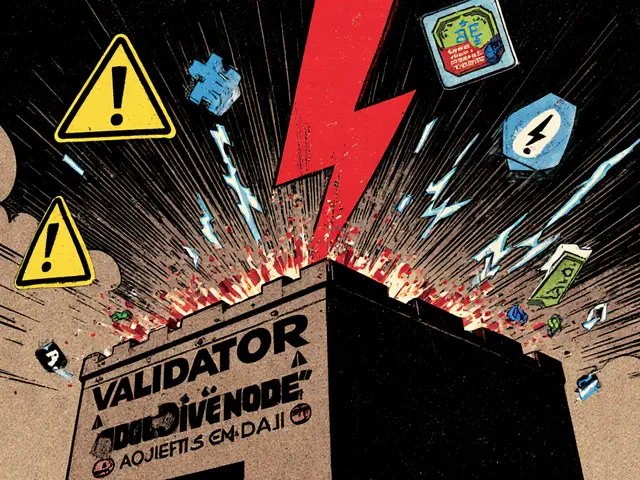
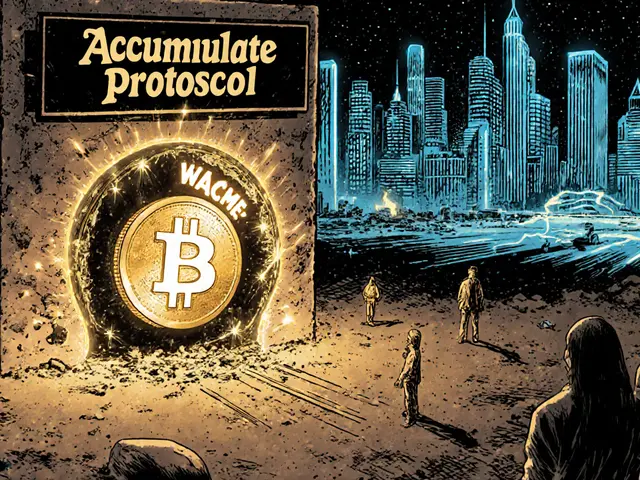
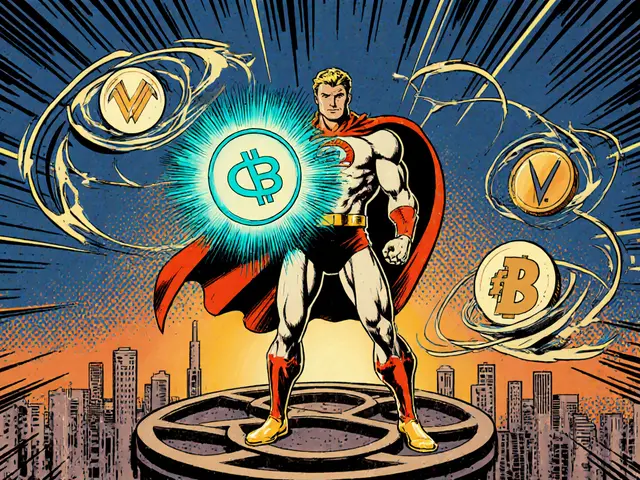


There are 23 Comments
Christina Norberto
Upon scrutinizing the recent HTX Argentina fiscal structure, one must entertain the supposition that a clandestine consortium orchestrates the ostensible transparency of fee schedules. The articulated maker‑taker dichotomy, while ostensibly equitable, conceals a labyrinthine algorithmic bias favoring opaque liquidity providers. It is plausible that undisclosed data streams feed into a hidden matrix, manipulating the 0.20% baseline for the uninformed. Moreover, the tiered reduction beyond 500 BTC, advertised as a mere 0.0126%, may be a veneer for selective rebate mechanisms that elude regulatory oversight. The perpetual invocation of "market‑driven" pricing is, in fact, a rhetorical ploy to legitimize predatory practices. One should contemplate the geopolitical ramifications of a cryptocurrency exchange operating under Argentine jurisdiction, where sovereign monetary policies are already in flux. The confluence of hyperinflationary pressures and digital asset speculation creates fertile ground for systemic exploitation. In this milieu, the purported “fee calculator” functions less as a tool for empowerment and more as an instrument of psychological conditioning. Users, lulled by the interface’s sleek design, may unwittingly consent to asymmetrical fee extraction. The subtleties of the HTML scaffolding mask the deeper code that governs transaction priority, which likely privileges high‑volume accounts.
Consequently, the casual trader is relegated to a peripheral status, their marginal profit eroded by imperceptible slippage. The existential risk is amplified when one considers the potential for cross‑border capital flight facilitated by such platforms. Ethical considerations demand a rigorous audit of the underlying smart contracts, lest they encode hidden siphoning clauses. In summation, while HTX presents an image of accessibility, the architecture betrays a deeper stratagem that warrants vigilant scrutiny.
Irene Tien MD MSc
Oh, the grand theater of fee tables! One can almost hear the dramatic music as you scroll through 0.20% here, 0.15% there, and then that sneaky 0.0126% whispering like a secret lover in the corner. It's as if the exchange decided to throw a lavish masquerade ball, inviting everyone to guess which tier they’ll land on. The UI – a masterpiece of pixel perfection – lulls you into a false sense of security while your wallet trembles in the backstage. And let’s not forget the “Calculate My Fees” button, the omnipotent oracle that pretends to demystify the labyrinth yet leaves you yearning for a crystal ball. In short, it’s a dazzling kaleidoscope of numbers that might just make you question whether you’re trading crypto or auditioning for a reality show.
Cindy Hernandez
For anyone new to HTX Argentina, the fee structure is fairly straightforward: the maker fee starts at 0.20% and can drop to as low as 0.0126% if you trade over 500 BTC in a 30‑day window. Taker fees, however, stay at 0.20% regardless of volume, so keep that in mind when planning large sells. The platform also offers spot, margin, and futures trading, each with the same fee tiers. If you’re just getting started, the calculator on the site can help you estimate your costs based on projected volume. Remember that higher volumes not only reduce maker fees but can also give you better access to liquidity pools.
Karl Livingston
I’ve been using HTX for a few months now, and honestly the fees felt reasonable once you hit the maker‑taker split. The biggest tip I can give is to try to stay on the maker side of trades whenever possible – it saves you a few percent over time. Also, keep an eye on your monthly volume; crossing that 10‑BTC threshold early in the month can make a noticeable difference. If you’re a casual trader, you probably won’t notice much, but for active folks it adds up.
Robert Eliason
Fees are a sham.
mark gray
The fee schedule is clear enough – maker 0.20% down to 0.0126%, taker flat 0.20%.
Alie Thompson
It is morally reprehensible that a platform can charge flat taker fees while offering negligible reductions for makers, effectively penalizing those who provide liquidity. In a fair market, both sides should share the burden, yet the structure here privileges large institutions capable of consistently making the market. This disparity deepens inequality among traders, fostering an environment where the wealthy grow richer at the expense of the average participant. Such practices erode trust and question the ethical foundation of decentralized finance, which purports to democratize access. We must demand transparency and a more balanced fee approach that reflects true reciprocity.
Samuel Wilson
HTX provides a well‑documented fee tier system, and the platform’s support team is responsive to inquiries regarding volume‑based discounts. For traders seeking to optimise costs, I recommend reviewing the monthly trading summary to ensure you are correctly classified within the appropriate tier.
Rae Harris
From a dev‑ops perspective, the fee architecture is a classic case of tiered‑pricing logic baked into the API layer. If you’re scripting bots, remember to query the fee endpoint before each order to avoid unexpected taker costs.
Danny Locher
Looks decent overall, especially if you can get your maker fee down. Nothing too crazy.
Emily Pelton
Let me be crystal clear; the HTX fee model is fundamentally unjust; it prioritises institutional actors-they get rebates while the average trader is stuck with a flat 0.20% taker fee!; this disparity is unacceptable; users deserve a truly equitable structure!; demand change now!
Donald Barrett
Those fees? Pure profit‑garnering for the exchange.
Kailey Shelton
Not impressed.
Angela Yeager
Hey folks! Just a quick heads‑up: if you’re trading on HTX Argentina, make sure you review the fee calculator regularly. It’s easy to miss the volume thresholds that drop your maker fees drastically. Happy trading!
vipin kumar
Did you know the same data that feeds the fee calculator is also used by hidden AI models to predict market moves? It’s all connected, and the average user never sees the full picture.
Lara Cocchetti
Honestly, the notion that a foreign exchange could operate with such “transparent” fees is laughable. If you’re not questioning the motives behind these tiered structures, you’re siding with the elites who design them.
Mark Briggs
Fees? Meh.
mannu kumar rajpoot
The fee schedule appears immaculate on the surface, yet it subtly nudges users toward higher‑volume trading, effectively feeding the platform’s liquidity engine while offering minimal genuine benefit to the individual trader.
Tilly Fluf
While the purported accessibility of HTX Argentina seems commendable, one must critically examine the asymmetry inherent in the fee architecture, which may inadvertently perpetuate systemic inequities within the market ecosystem.
Darren R.
Behold! The drama of a “simple” fee table unfolds before us-0.20% here, 0.0126% there-yet the true story lies in the shadows where liquidity hunters thrive, and the meek traders are left to whisper their woes!; what a spectacle!
Hardik Kanzariya
Just a friendly reminder: keep tracking your 30‑day volume. Hitting the next tier can shave a few basis points off your maker fees, which adds up over time. Stay on top of it!
Shanthan Jogavajjala
From an engineering standpoint, the fee‑calculation endpoint returns a JSON payload with tier thresholds; developers should cache these values to reduce API calls, especially when building high‑frequency trading bots.
Ayaz Mudarris
Philosophically speaking, the act of charging fees reflects the broader paradox of value extraction in decentralized economies; we must ask whether the exchange’s profit motive aligns with the collective good or merely serves a select few.
Write a comment
Your email address will not be published. Required fields are marked *